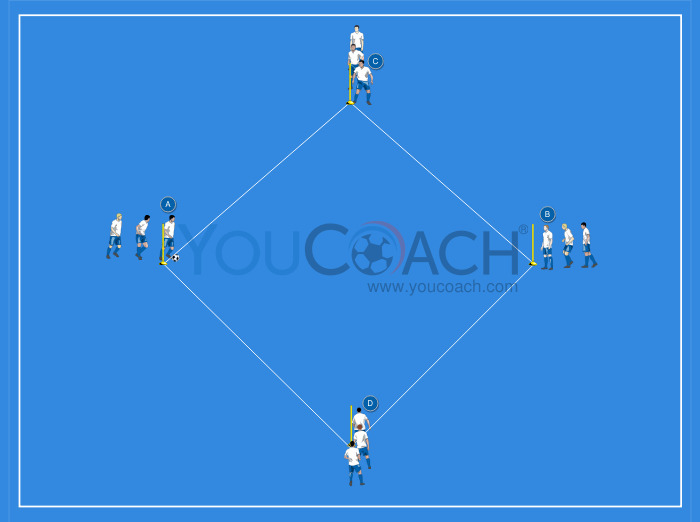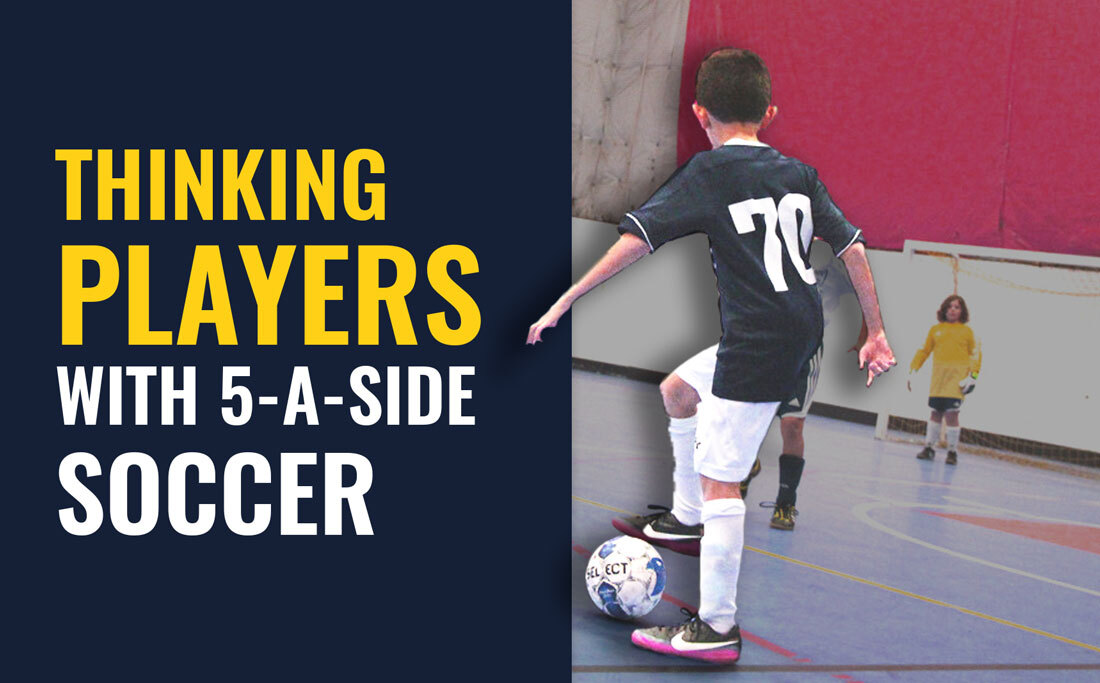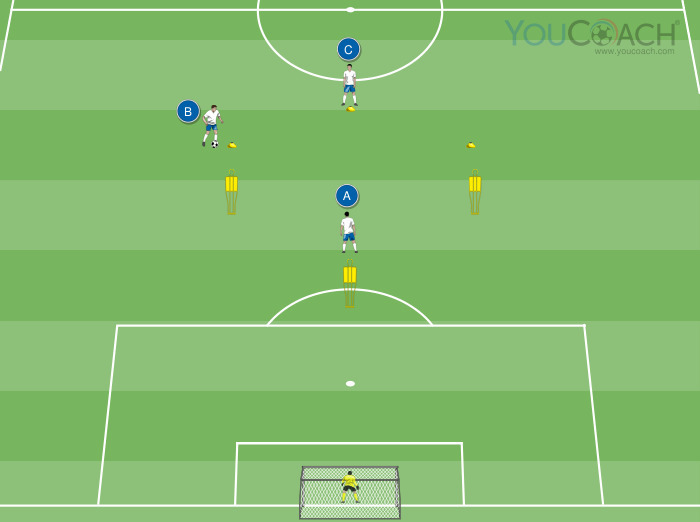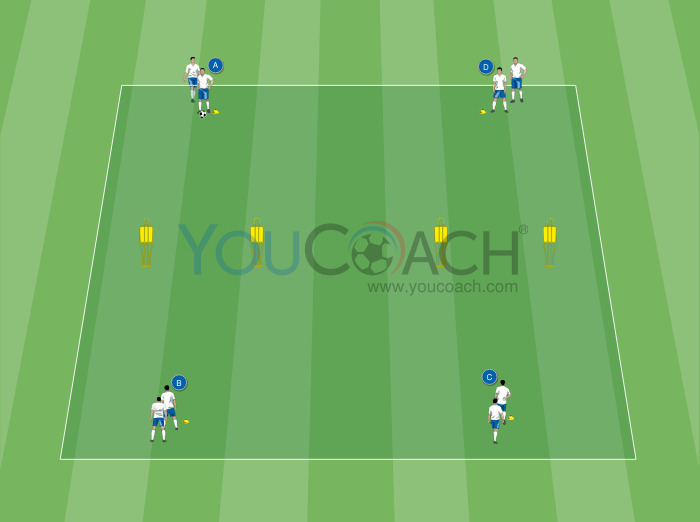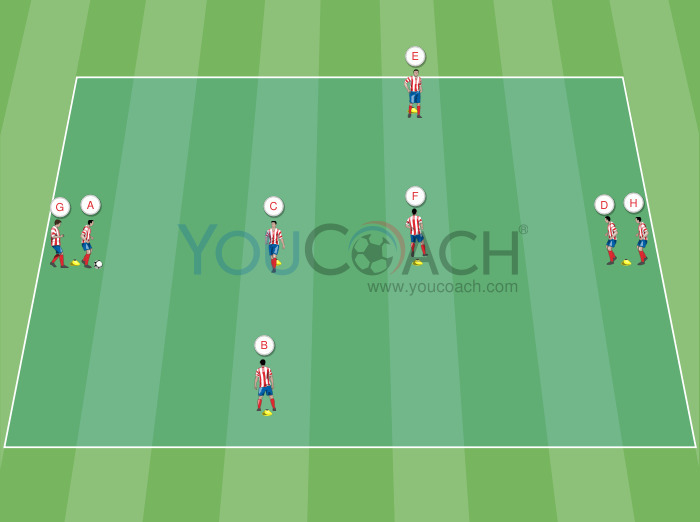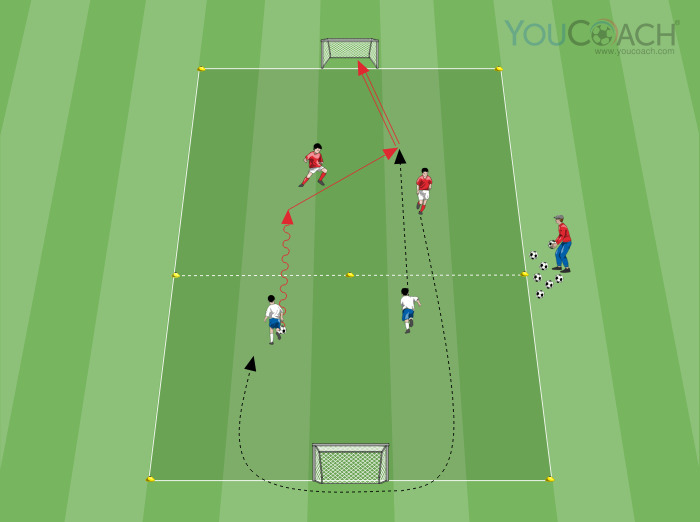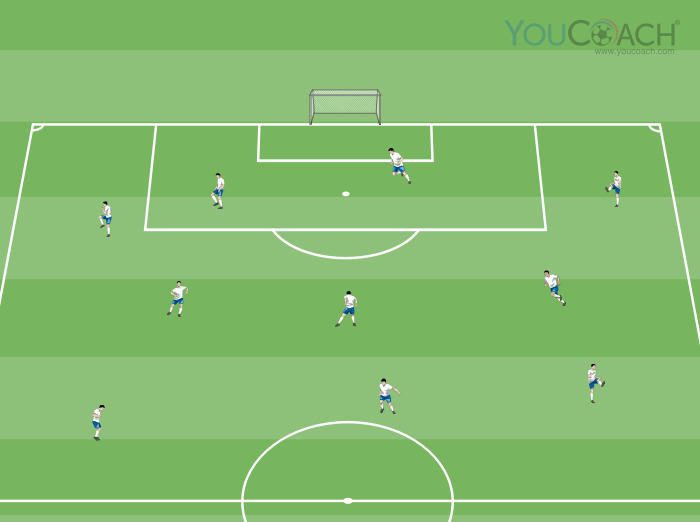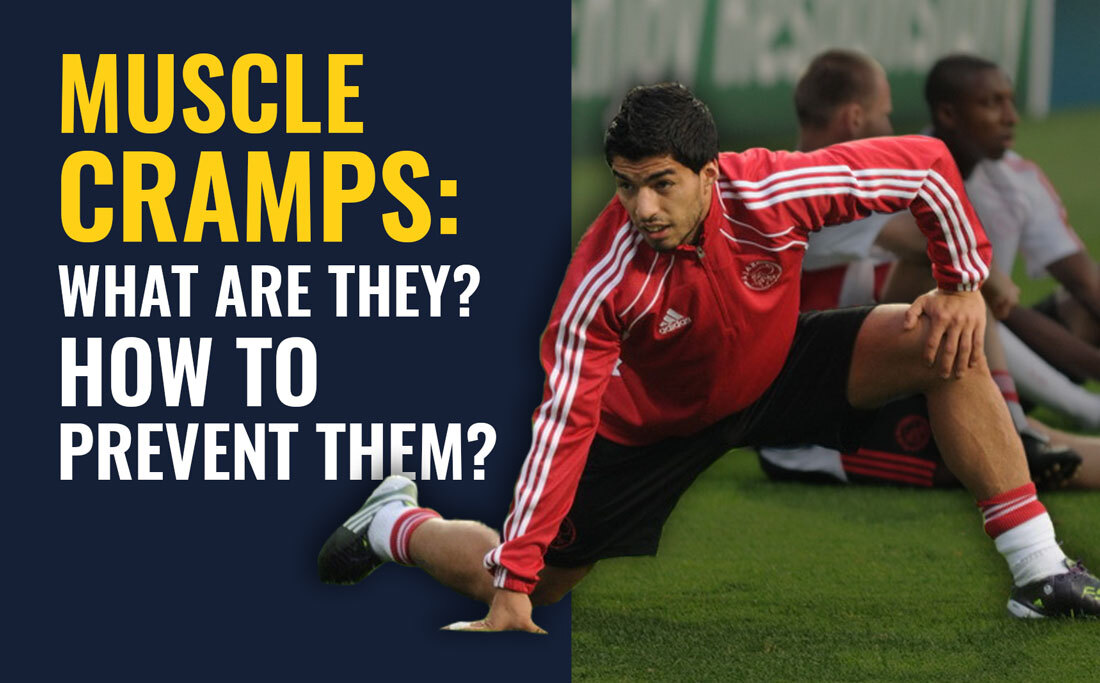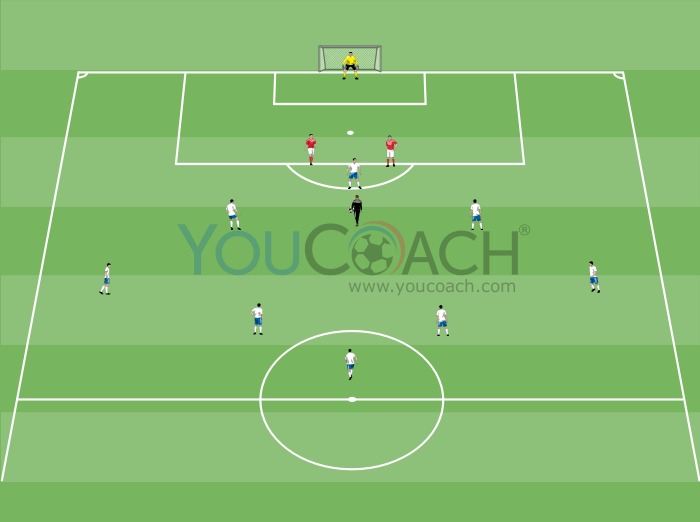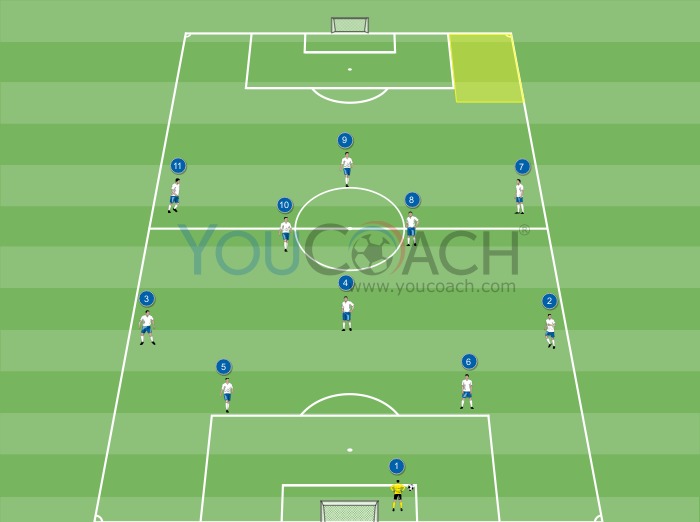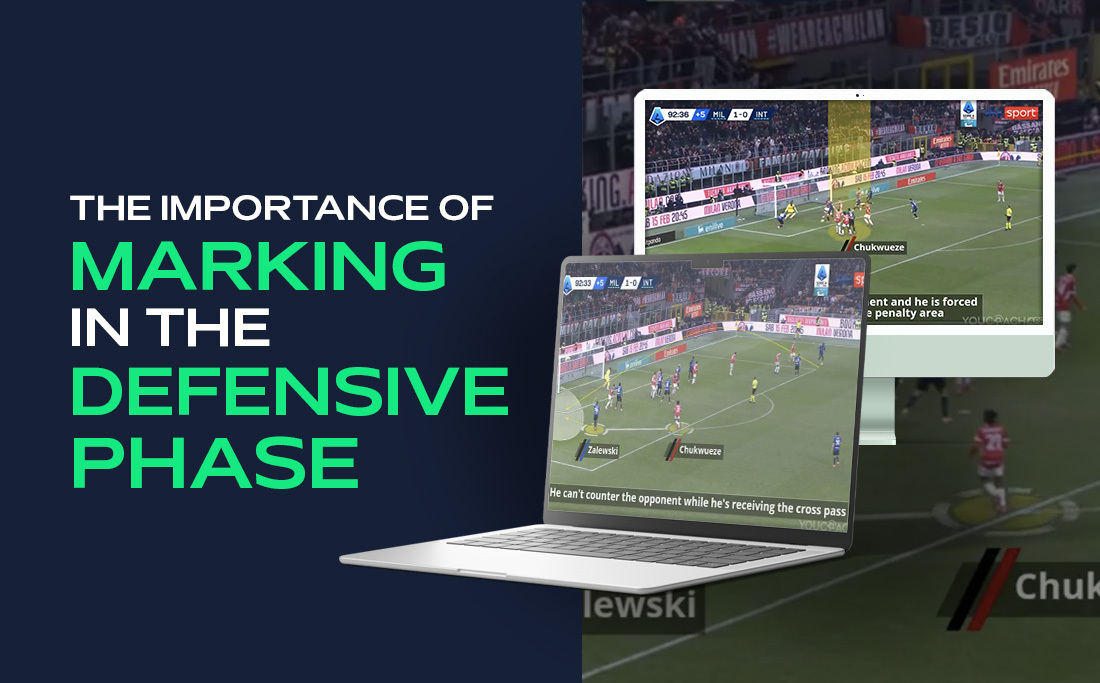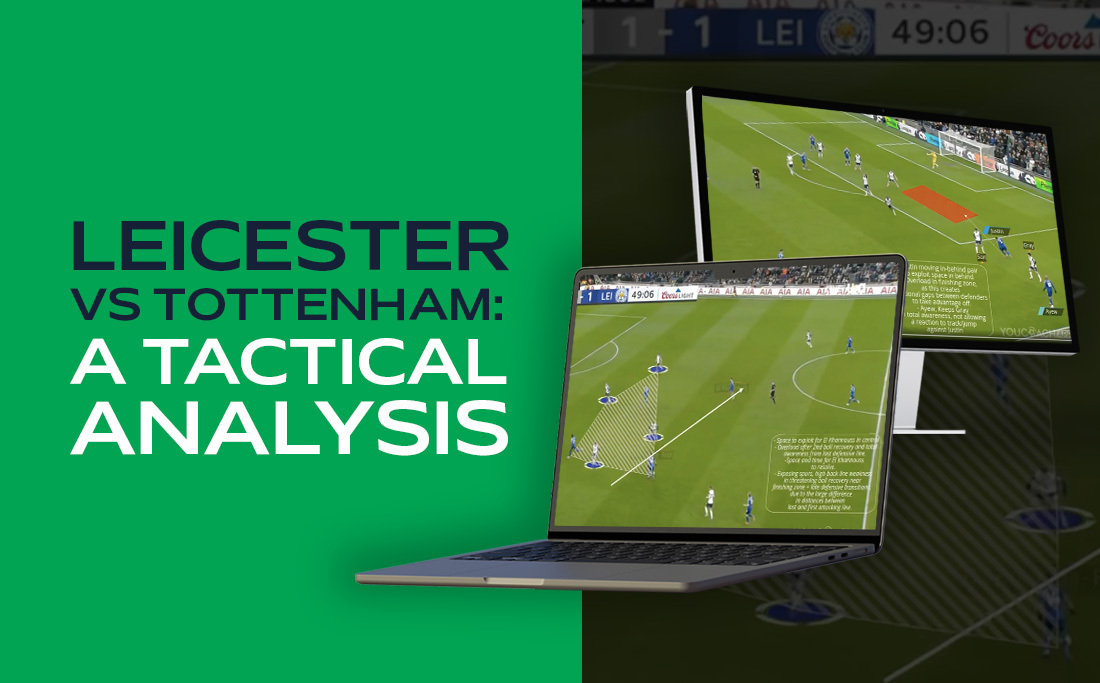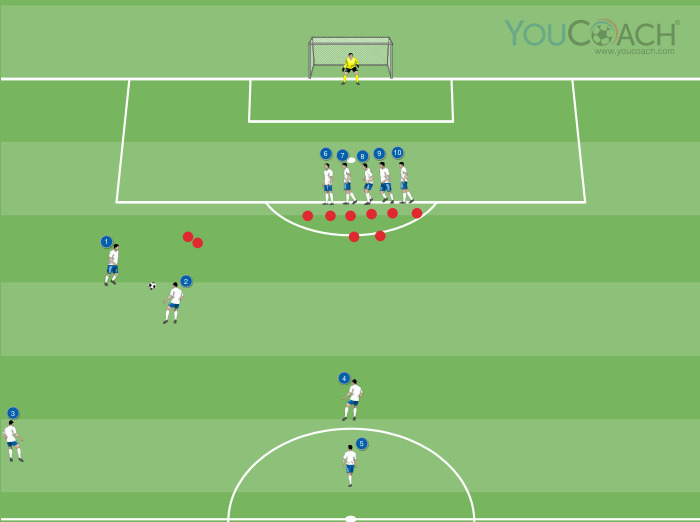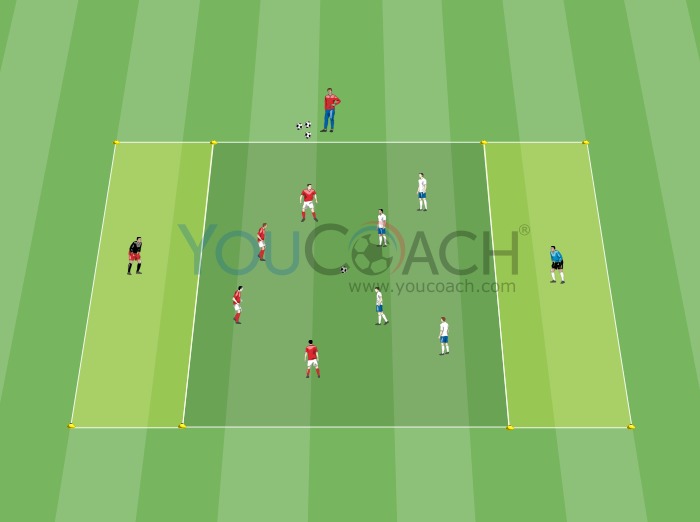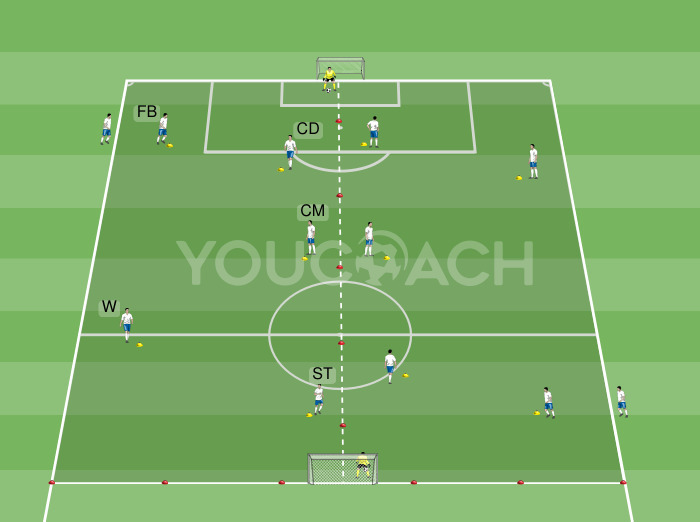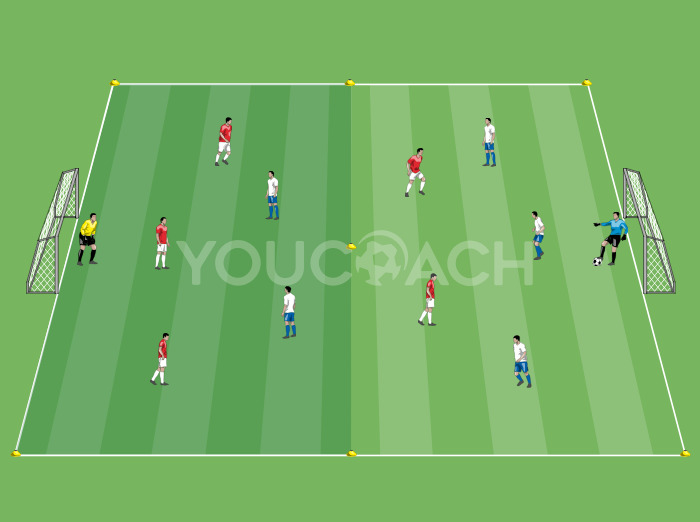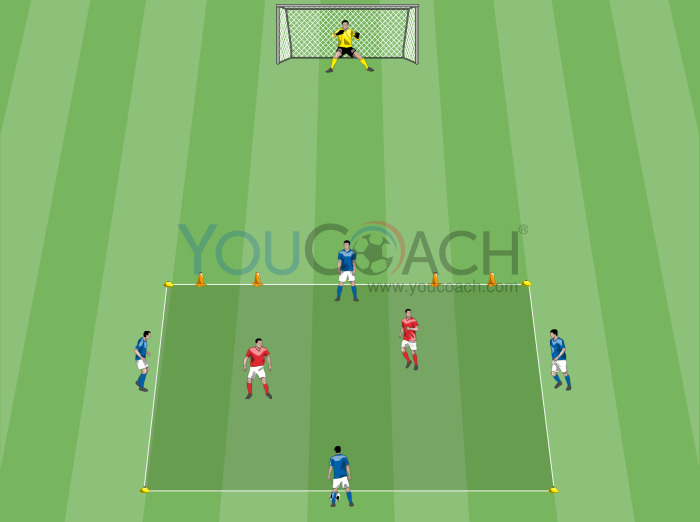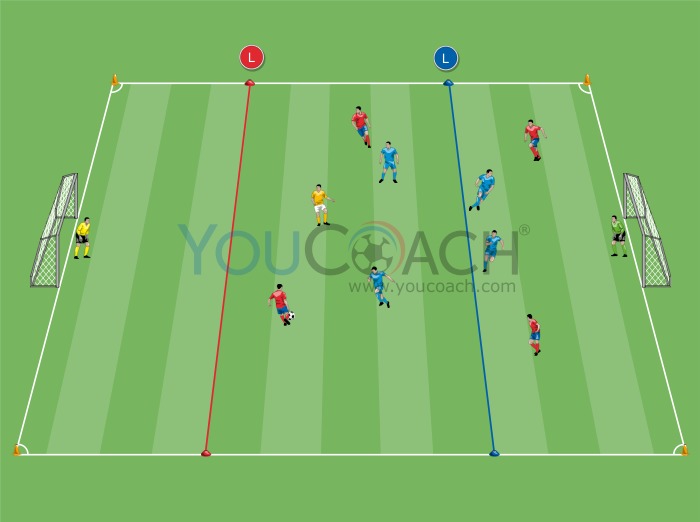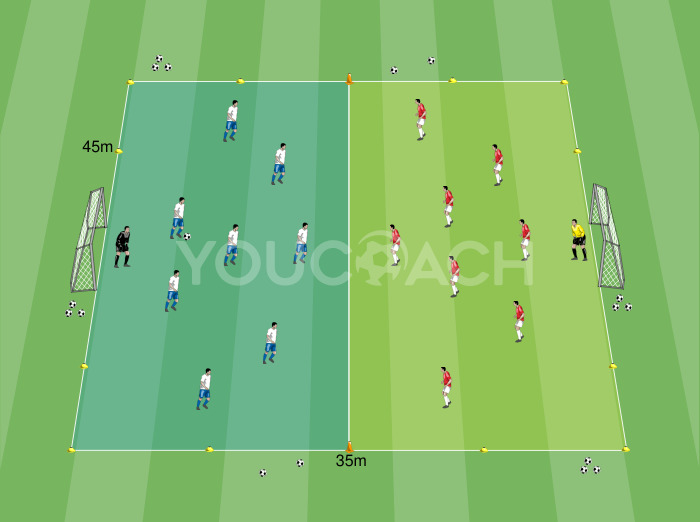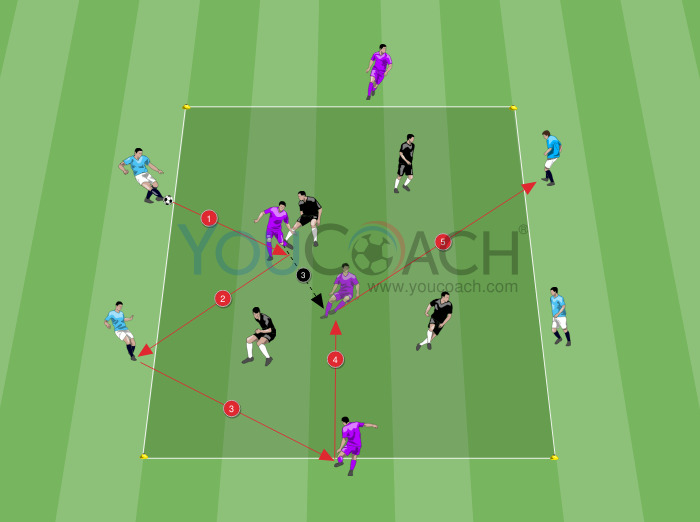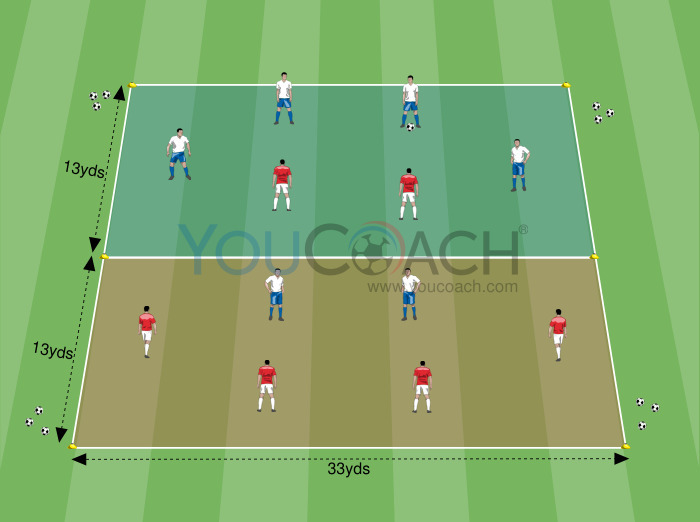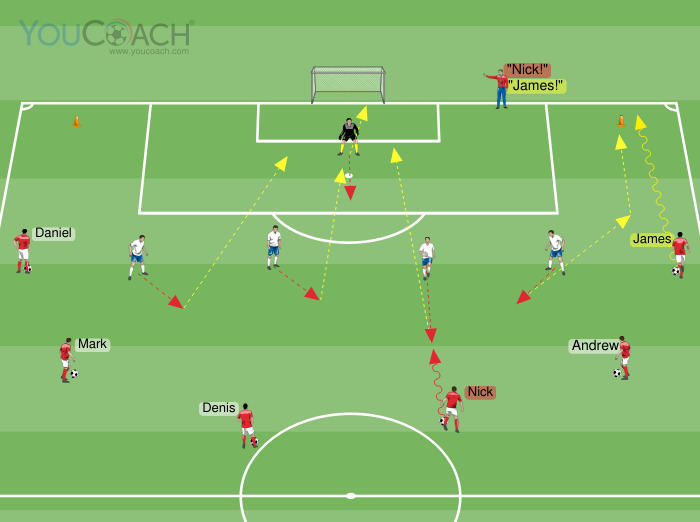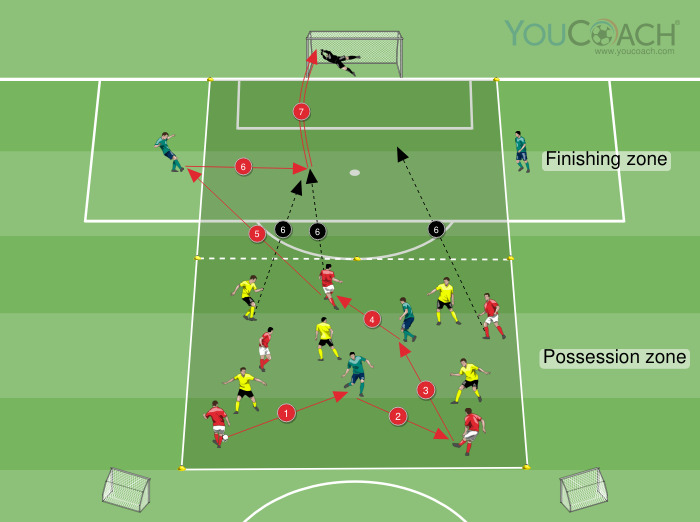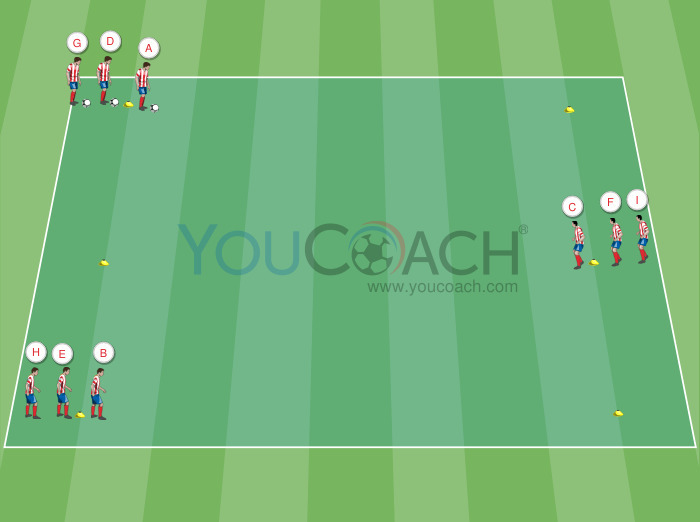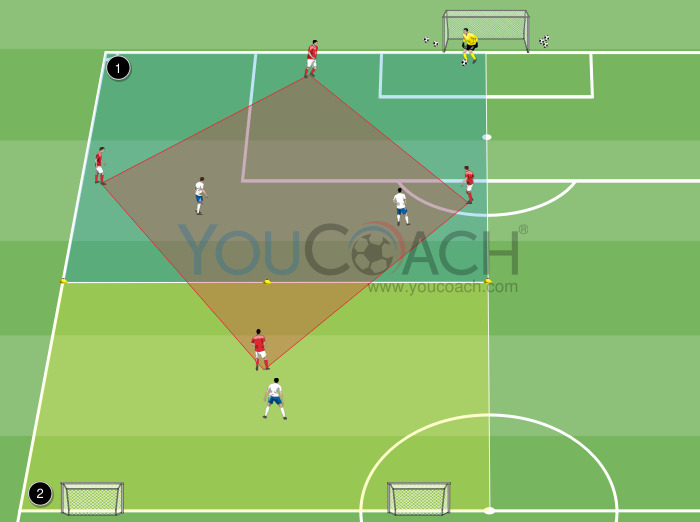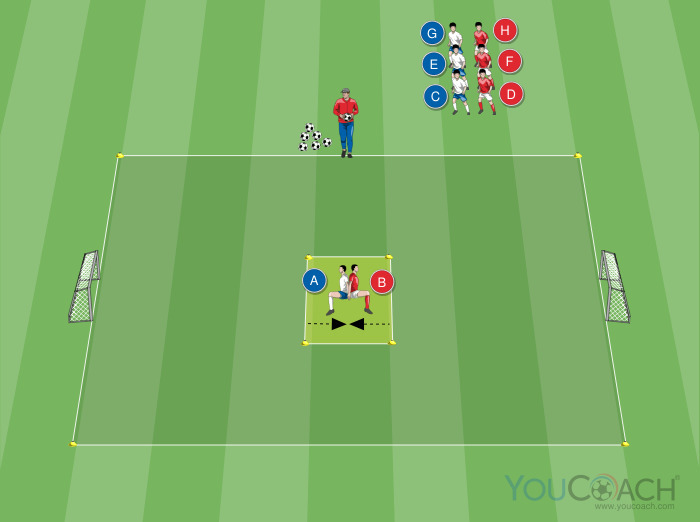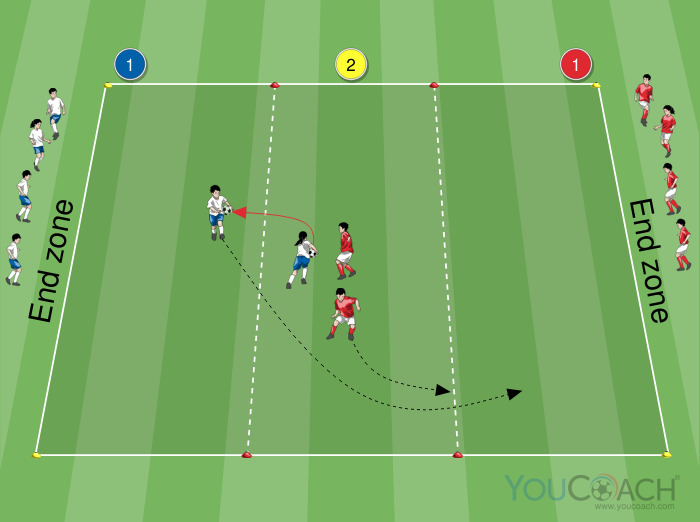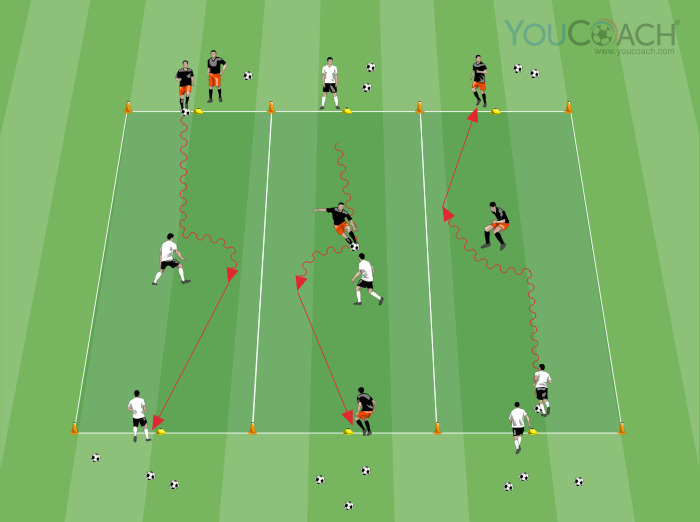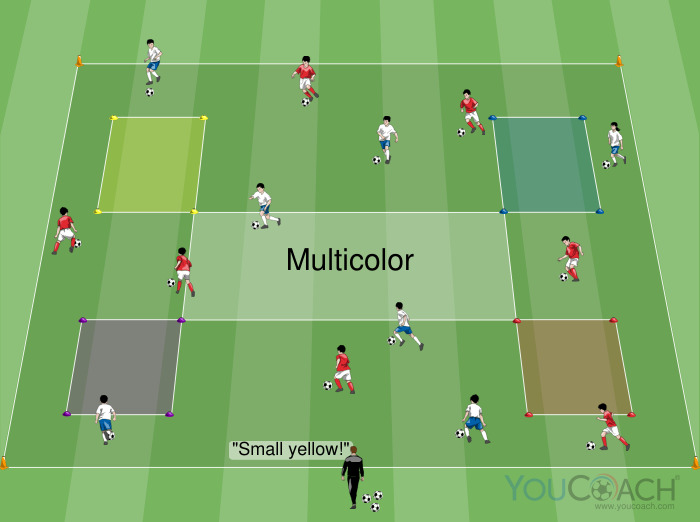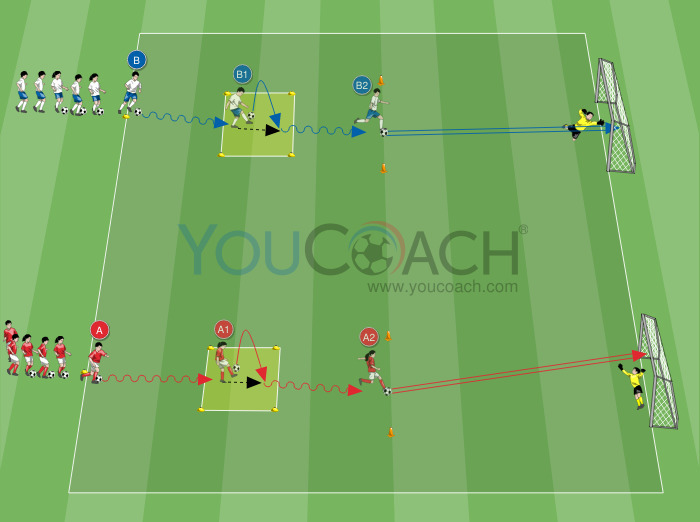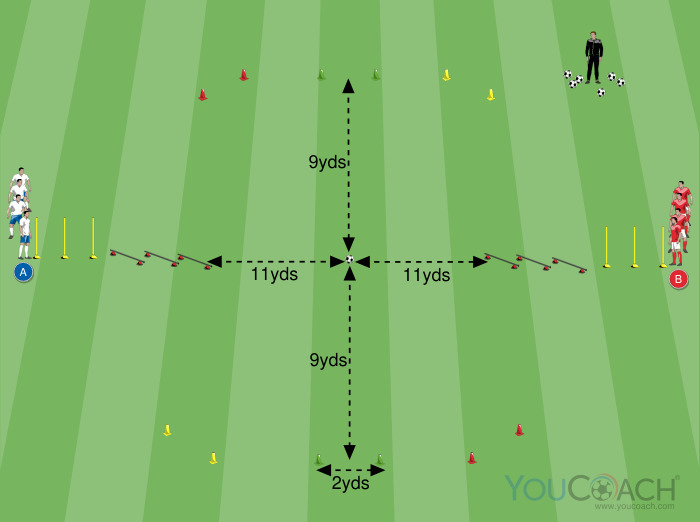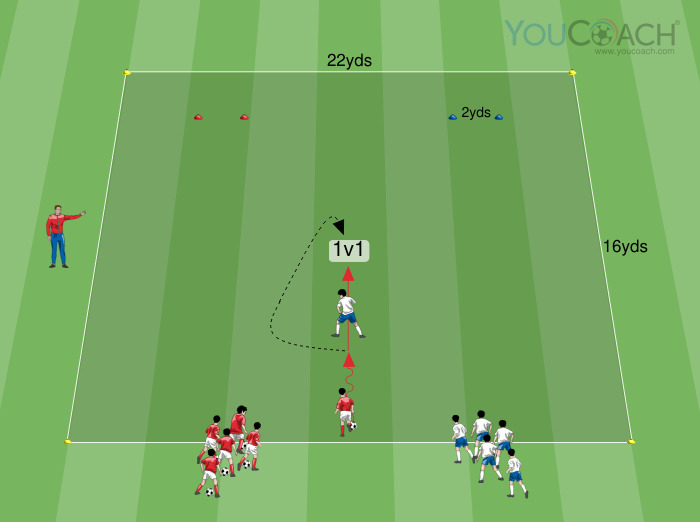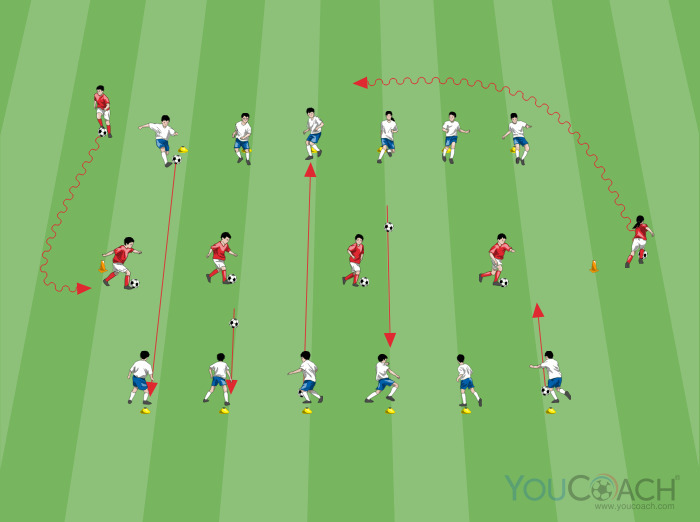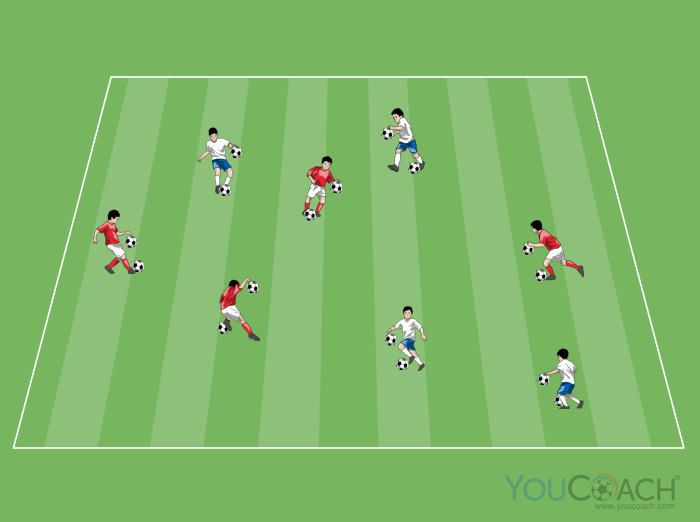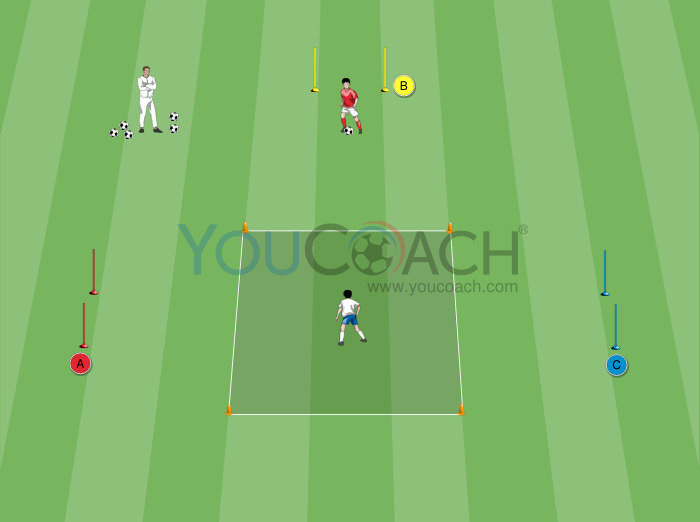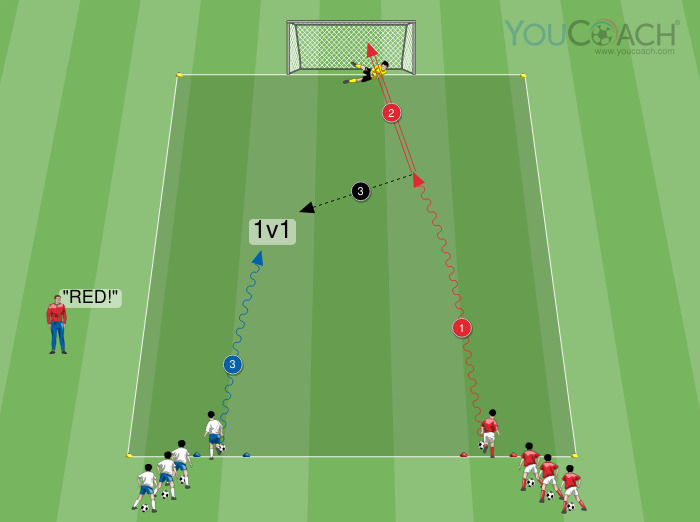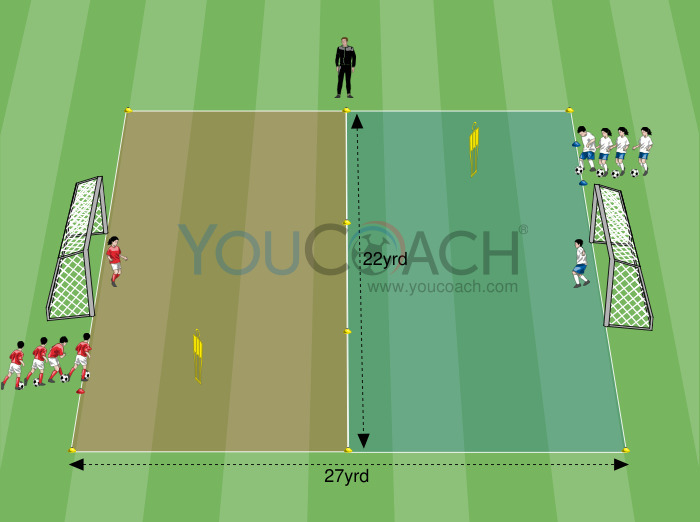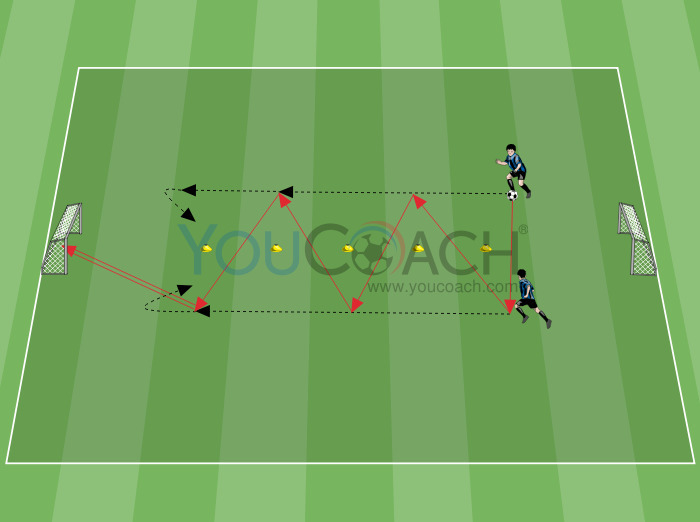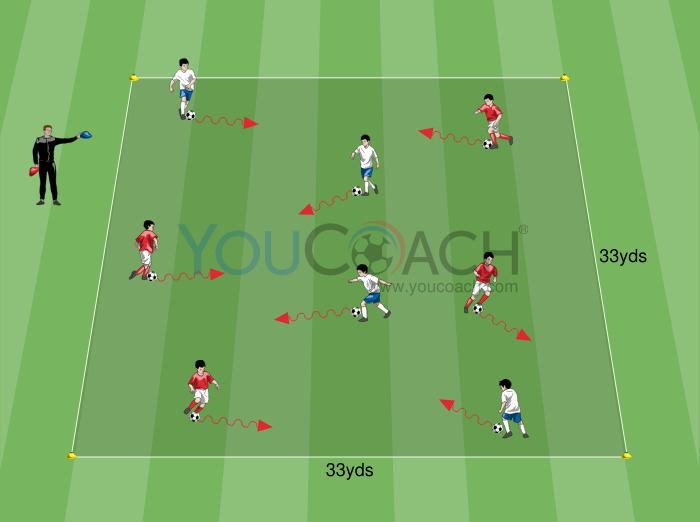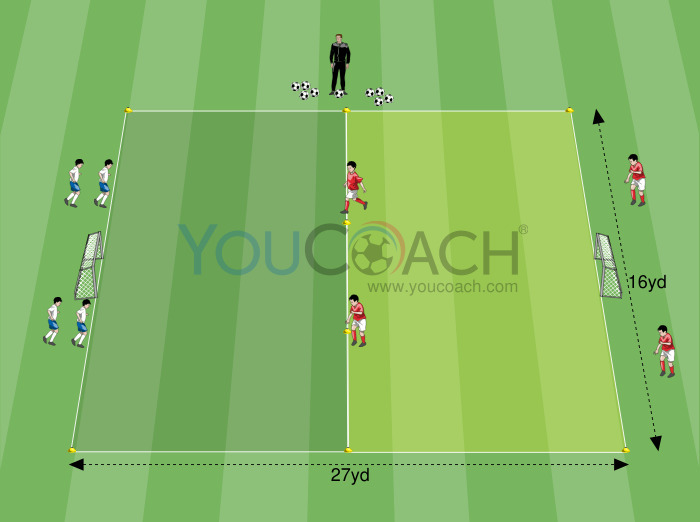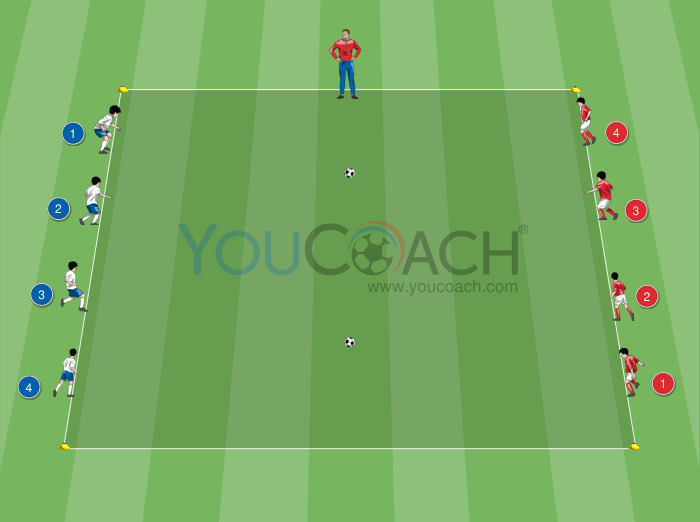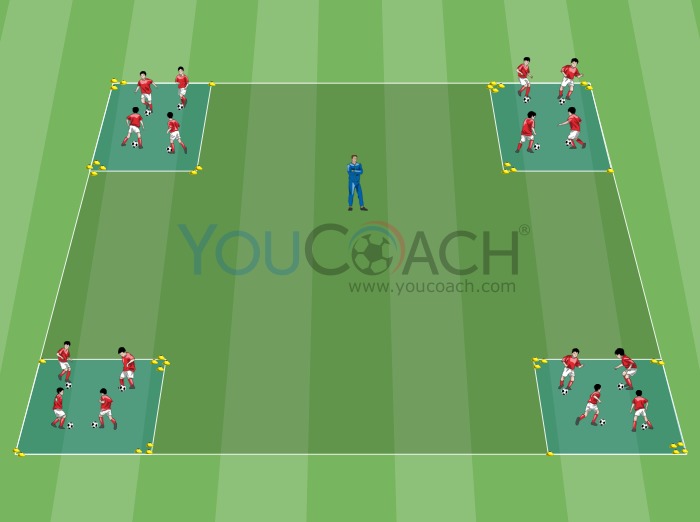Small-sided Game 4 v 4 + supports: keeping the position
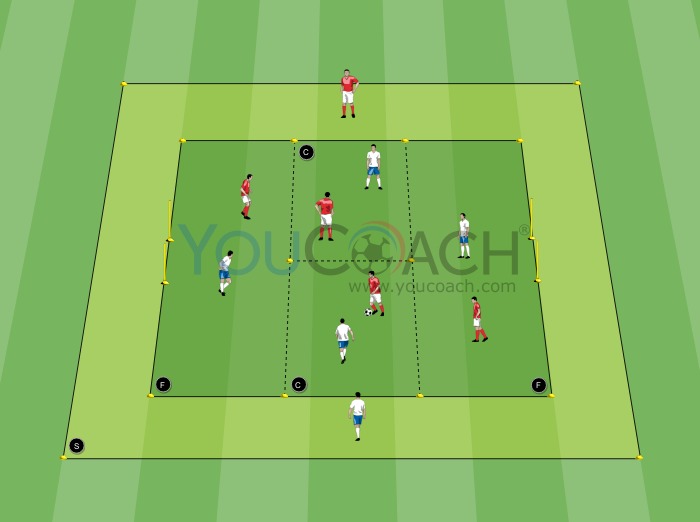
- 14 markers
- 4 poles
- Balls
- 5 vests
- Playing area: 20x15 meters / 22x16 yards
- Players: 10
- Duration: 15 minutes
- Series: 4 of 3 minutes each with 1 minute of passive recovery in between series
| Summary | Secondary Objectives |
|---|---|
|
Conditional game that trains the ability to lose the marker in a free zone and passing skills of players with movement within fixed zones |
Passing, Dribbling, Shooting, 1v1 attacking, 1v1 Defending, Body shape, Positioning, Feints and tricks, Pass |
Prepare a 20x20-meter/22x22-yard play area as in the picture (measure sides perimeter of outer square). On the inside, create another square measuring 15 meters/16 yards per side.
Divide the central pitch into four areas:
- two finishing areas 5 meters/yards wide x 15 meters/16 yards deep (left and right in the picture) - F
- a central strip divided into two equally sized areas 5 meters/yards wide x 7.5 meters/8 yards deep - C
Along the entire perimeter of the central playing square, mark out a bank strip about 2.5 meters/yards (S) wide.
Prepare two mini goals about 1 meter/yard wide with posts on the extreme sides of the "F" areas. Position them approximately halfway up the sides.
Players are divided into two teams of five each using jerseys (red versus white in the picture). A 5 v 5 ball possession is played with objective finishing in the lateral goals. One player from each team goes into the "S" area and plays as a flanker. The other players split into the four areas "C" and "F" in pairs, one per team (as in the picture). Except for the players who serve as flanlers, individual 1 v 1 duels are formed in each area of the central square of play within a wider ball possession of 5 v 5.
- The purpose of the drill is to develop possession of the ball (by making at least six consecutive passes) while avoiding interception by opponents
- At the end of the six consecutive passes the action can be ended in the mini goals (the choice is dictated by the development of possession and the position of the opponents)
- At the end of each series reverse the roles of the players so that all play as backs and as inside players in different areas, central or lateral ("C" or "F")
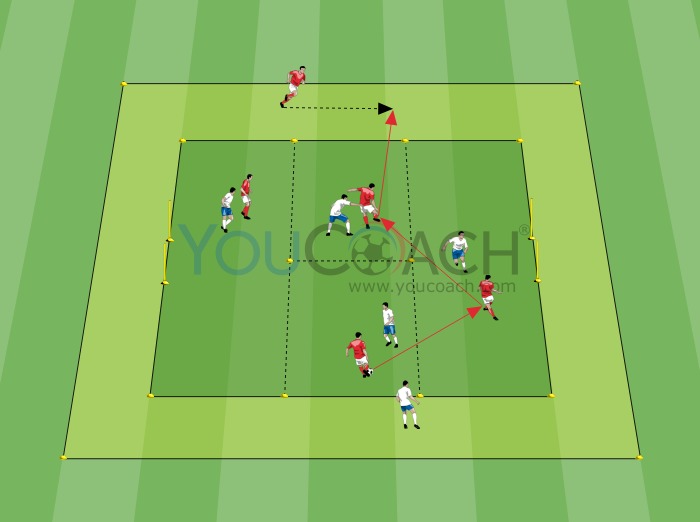
- Each player must stay within their own zone
- The flank players move along the outer strip helping the development of the game and without opposing each other
- The ball cannot leave the defined areas led by a player but only through a pass
- The team in possession, once the six consecutive passes have been reached, can finalize in any goal
- Six consecutive passes are worth one point
- Goal is worth one point
- Players in possession of the ball have an unlimited number of touches at their disposal
- Once the six consecutive passes have been obtained, players on the team in possession of the ball can move freely between zones to finalize the action
- Increase or decrease the number of consecutive passes required to get the point and go to the mini goals to finish
- Increase the size of the field
- Limit the number of touches available to players during possession (e.g., three touches)
- Players learn how to position the body for receiving the ball and to have the best view on the field
- Players learn to quickly process solutions and move into tight spaces to receive the pass
- A series of 1 v 1s are created in tight spaces that force immediate passing and continuous unmarking of teammates
- Flank players are subject to a significant aerobic load, make sure to allow proper recovery time
- Players must take great care in communicating with each other as the game is fast-paced, in tight spaces and with high variable load


